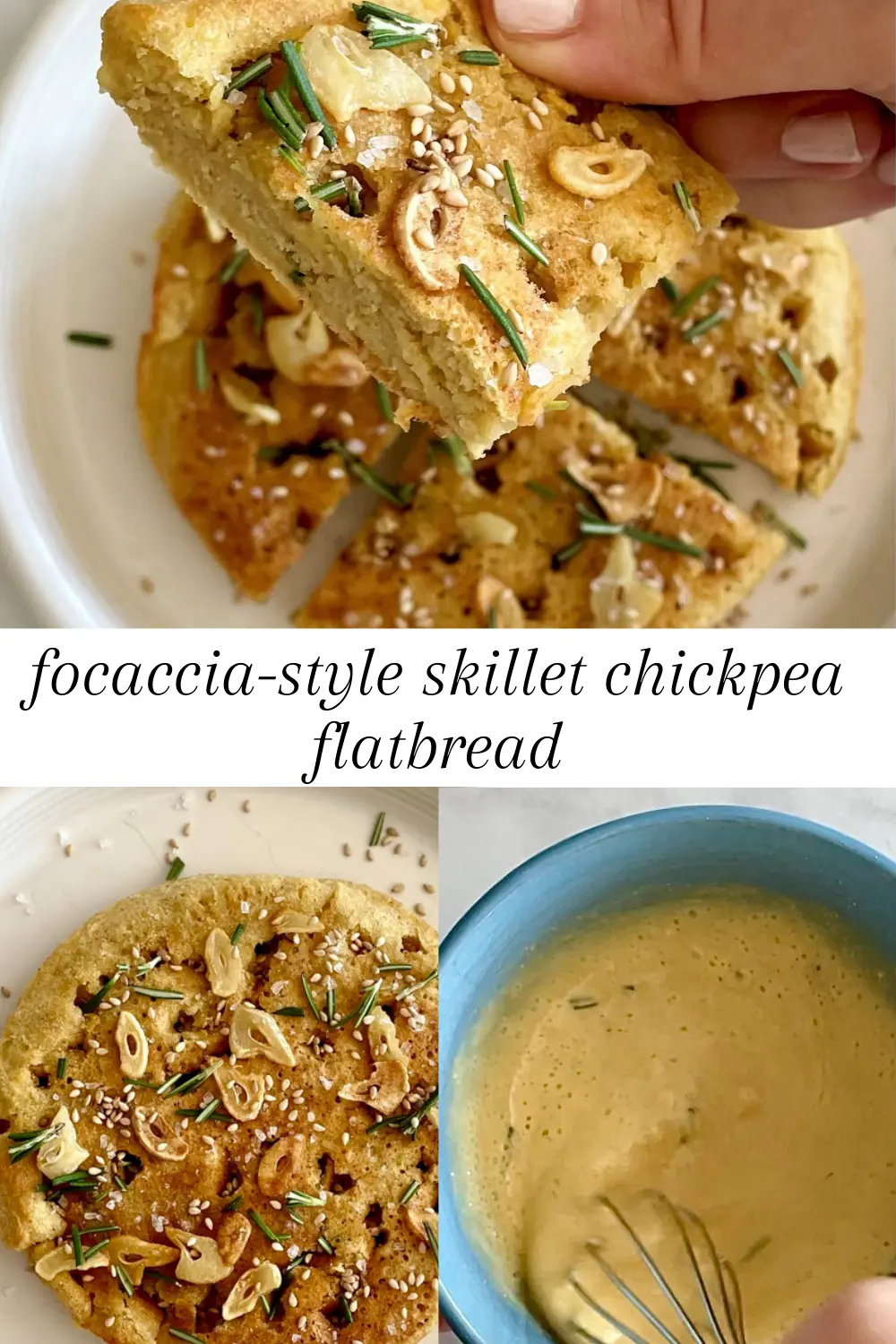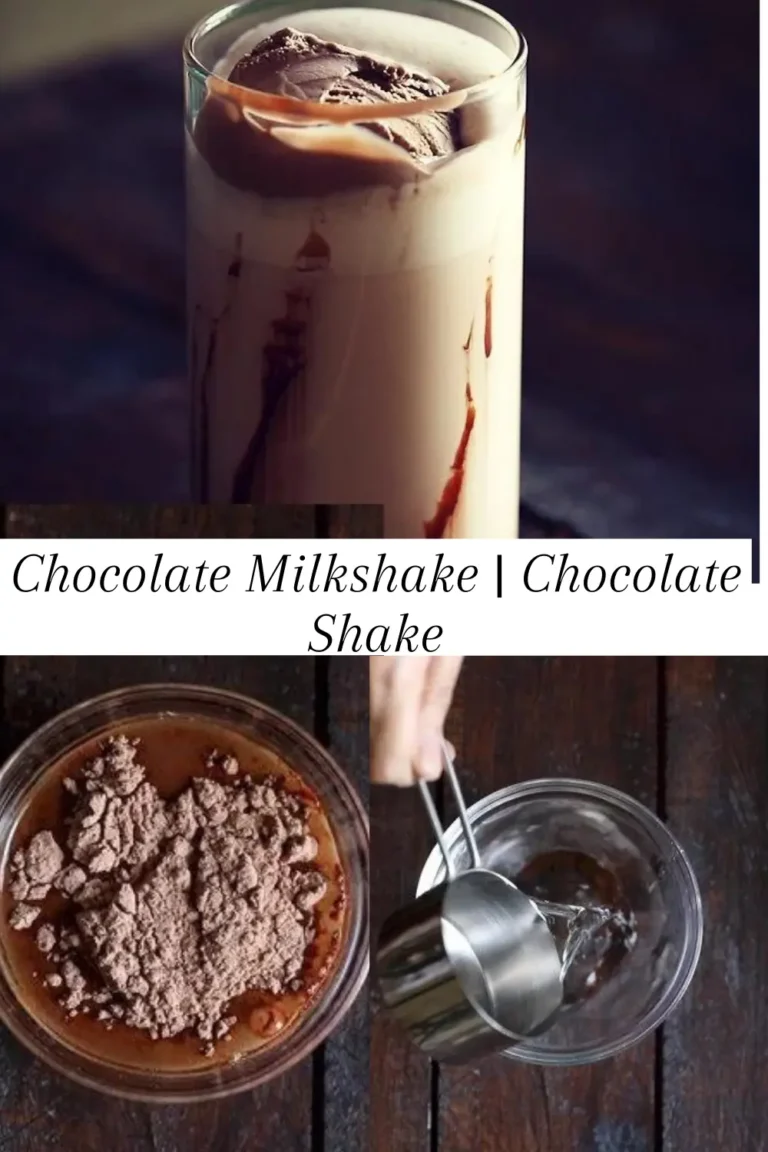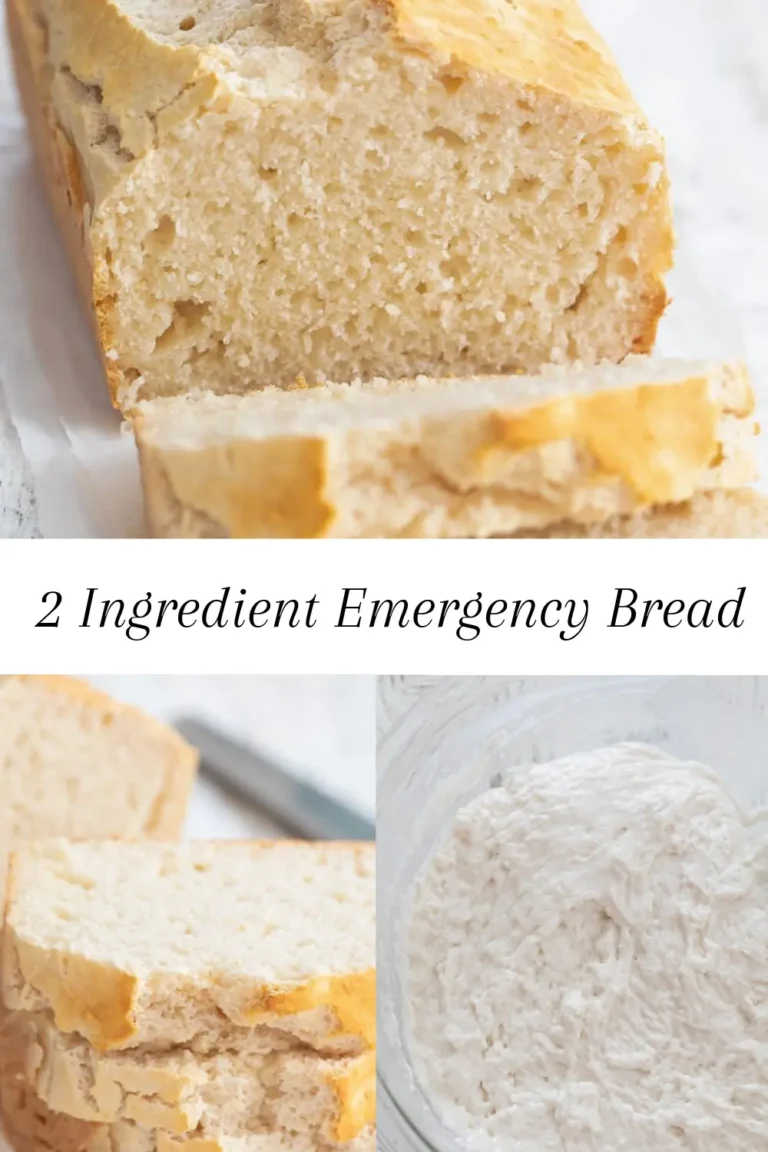focaccia-style skillet chickpea flatbread
The journey of creating the focaccia-style skillet chickpea flatbread started during a serendipitous visit to a charming bakery nestled in a small village in Tuscany. Mornings there are filled with the tantalizing aroma of freshly baked bread, wafting through cobblestone streets and enveloping the senses. It was in this idyllic setting that the idea took root. An elderly baker, with wisdom etched in each wrinkle, shared stories of her family’s recipes handed down through generations. Among those tales was one of a chickpea flour bread, a lesser-known but cherished tradition in her kitchen.
Chickpea flour, or farina di ceci as it’s known in Italian, boasts an impressive nutritional profile. It is a powerhouse of protein and fiber, providing a hearty and healthful alternative to regular wheat flour. Its natural density helps create a flatbread that is both satisfying and nourishing, making it an excellent component of a balanced diet. This focus on wholesome ingredients was compelling, aligning beautifully with contemporary culinary trends that emphasize nutritious, yet delicious, food creations.
The idea to merge chickpea flour with the classic characteristics of focaccia stemmed from a profound appreciation for the rustic simplicity of traditional Italian breads. Focaccia, with its airy texture and savory essence, has always embodied the heart of Italian bakery. The addition of chickpea flour not only reinvented this classic but also elevated it into a nutritionally rich, gluten-free option suitable for a variety of dietary needs.
As the experimental batches unfolded, blending the character of focaccia with the resilience of chickpea flour, a unique flatbread emerged. It was a culinary revelation, pleasing to both the palate and the body. Each bite of the focaccia-style skillet chickpea flatbread delivers a slice of Italian heritage imbued with modern health-conscious sensibilities, inviting you to savor more than just a meal – it’s a piece of a broader culinary narrative.
Gathering Your Ingredients
The cornerstone of a remarkable focaccia-style skillet chickpea flatbread lies in the selection and freshness of its ingredients. Each component plays a pivotal role in creating a harmoniously balanced and delicious dish. Fresh ingredients not only elevate the flavor but also significantly contribute to the texture and aesthetic appeal of the flatbread.
Starting with the herbs, aromatic fresh rosemary is indispensable in this recipe. The strong, piney scent of rosemary infuses the flatbread with a characteristically earthy undertone that dried herbs simply cannot replicate. For the most vibrant taste, choose rosemary sprigs with firm, green needles and avoid any that appear dry or discolored.
Olive oil is another crucial element. It should be golden, warm, and of high quality. Extra virgin olive oil is recommended due to its rich, nuanced flavor profile. The olive oil will be used generously, both in the dough and on the skillet, to ensure a golden, crispy crust and tender interior.
Water quality is often overlooked, but it plays an essential role in activating the baking soda. Using warm water aids in dissolving the flour and helps in achieving a smooth batter. Opt for slightly warm but not hot water to ensure the perfect texture.
Garlic and lemon juice are key to developing a savory, tangy flavor profile. Fresh garlic cloves, when minced, release a robust and pungent aroma, while freshly squeezed lemon juice adds a bright acidity that balances the dish. Avoid pre-minced garlic and store-bought lemon juice as they lack the intensity and freshness required.
Another vital ingredient is sesame seeds. Freshly toasted sesame seeds provide a delightful crunch and a subtly nutty flavor, enhancing the overall taste. Lightly toast them to bring out their natural oils and flavors before incorporating them into the recipe.
In conclusion, paying attention to the quality and freshness of each ingredient can profoundly impact the final outcome of your focaccia-style skillet chickpea flatbread. Each element, from herbs to oil, combines to create a dish that is not only delicious but also a feast for the senses.
Step-by-Step Journey
The journey to creating focaccia-style skillet chickpea flatbread begins with the careful combination of dry ingredients. Start by whisking chickpea flour, salt, and a pinch of baking soda until they are well-blended. This initial step is crucial as it ensures a consistent base for your flatbread.
As you mix, gradually introduce finely chopped fresh rosemary. Rosemary not only adds a delightful aromatic quality but also imbues the dough with a subtle herbal flavor that complements the chickpea base beautifully. Next, incorporate a generous amount of extra virgin olive oil, stirring until the mixture begins to resemble a thick batter. At this point, the dough will appear slightly lumpy.
The transformation from this initial stage to a smooth, cohesive batter is pivotal. Continue to mix, allowing the olive oil to hydrate the chickpea flour fully. As the dough achieves a smooth consistency, its transformation sets the stage for a deliciously textured flatbread.
Now, prepare your skillet with a touch of olive oil, heating it over a medium flame. Add minced garlic and let it caramelize slightly, releasing a rich, mouth-watering aroma. The essence of garlic infuses with the oil, creating an exquisite flavor base. Carefully pour the prepared batter into the skillet, spreading it evenly.
As the batter hits the warm, garlic-infused oil, it should sizzle gently. This sound is a promising indicator of impending culinary delight. Observe the shifting colors and textures closely; the flatbread will gradually turn golden brown. Rather than relying solely on timing, watch for these sensory cues to gauge doneness optimally.
As the edges begin to crisp and the center firms up, you’ll know your focaccia-style skillet chickpea flatbread is ready. The combination of crispy exterior and soft, tender interior invites a sensory symphony, promising a flatbread that’s not only visually appealing but also richly flavorful and aromatic.
Serving and Enjoying Your Chickpea Flatbread Masterpiece
Once your focaccia-style skillet chickpea flatbread is ready, the possibilities for serving and enjoyment are truly endless. The flatbread’s crispy edges and tender, flavorful center make it an extremely versatile component of any meal. Consider pairing it with a fresh, vibrant salad to create a well-rounded, satisfying dish. The flatbread’s delightful texture complements the crunchiness of greens and the juiciness of seasonal fruits, enhancing your dining experience.
Subtle yet tangy dips are another excellent accompaniment for your chickpea flatbread. Try serving it with a classic hummus, baba ganoush, or a zesty tzatziki to add layers of flavor and provide a creamy texture that contrasts perfectly with the flatbread’s crunch. These dips bring out the nutty notes of the chickpea base, enhancing every bite.
If you’re looking to serve your flatbread as a side dish, it can beautifully complement a variety of hearty soups. Imagine dipping your focaccia-style skillet chickpea flatbread into a rich tomato bisque or a robust lentil stew. The infusion of the flatbread’s savory flavors into the warm, comforting broth will elevate your soup to new heights, making every mouthful an indulgent delight.
There are many occasions where this flatbread shines. In my own experience, it has been a crowd-pleaser at family gatherings, particularly during cozy winter dinners or casual weekend brunches. It provides a warm, rustic touch to the table, inviting everyone to share memorable meals together. Serving it fresh from the skillet, with its intoxicating aroma filling the kitchen, turns any ordinary meal into a special culinary event.
Overall, this focaccia-style skillet chickpea flatbread not only brings unique flavors and textures to your plate but also offers a foundation for creating diverse and inviting dining experiences. Whether served alongside salads, dips, or soups, or as the star of the meal, it promises to be a delightful and unforgettable addition to your cooking repertoire.
Ingredient
- 1 teaspoon roughly chopped fresh rosemary, divided
- 1/4 teaspoon baking soda
- Pinch of fine sea salt
- 1/4 cup water (use warm water for best results!)
- 1 tablespoon extra-virgin olive oil, divided
- 1/2 teaspoon lemon juice
- 1 large garlic clove, extra-thinly sliced
- 1/8 teaspoon flaky or coarse sea salt
- 1/4 teaspoon sesame seeds, toasted (optional)
Instructions
- In a small bowl or liquid measuring cup, whisk together the flour, 1/2 teaspoon of the rosemary, the baking soda, and fine sea salt. Then whisk in the water and 1/2 teaspoon of the olive oil. (Note: Use warm water for best results. If mixture is a little lumpy, add another 1/2 teaspoon more olive oil and whisk for at least 1 minute more.) Let mixture stand for 10 minutes to allow ingredients to marry.
- Meanwhile, heat 1 1/2 teaspoons of the olive oil in a 6-inch (or larger)* cast iron or other stick-resistant skillet over medium heat, add the garlic slices and cook until just turning golden brown (lightly caramelized), about 2 minutes.Transfer the garlic using tongs or a slotted spoon to a small bowl.
- Over medium heat, in the garlic-infused oil that remains in the fully heated skillet, pour in the batter, and spread it out to form a 6-inch diameter round. Cook until browned on the bottom, about 3 to 3 1/2 minutes, drizzling with the remaining 1 teaspoon olive oil just before flipping over. Flip over, immediately making several deep impressions (holes) with a heat-proof chopstick, and cook until browned and cooked through, about 1 1/2 minutes more. Pay closer attention to color than cooking time!
- Transfer the focaccia to a plate, sprinkle with caramelized garlic slices, flaky sea salt, remaining 1/2 teaspoon rosemary and, if using, the sesame seeds. Cut into quarters to serve.







